Home > Pterosaurs of Big Bend
Pterosaurs of Big Bend
The Late Cretaceous pterosaur Quetzalcoatlus Lawson 1975 (Pterodactyloidea: Azhdarchoidea)
This research was published Open Access on 12/8/2021 as a Memoir of the Society of Vertebrate Paleontology [here]
Press release from the Jackson School of Geosciences available [here]
Kevin Padian and Matthew Brown, Editors
This volume provides the first comprehensive look at the fossil remains of the airplane-sized flying reptile Quetzalcoatlus, which was discovered by a University of Texas at Austin graduate student in 1971 in Big Bend National Park. Five of the volume’s eight authors are affiliated with UT, with papers including two posthumous contributions by Wann Langston, Jr., who spent much of his 75-year career working on Big Bend paleontology and oversaw the excavation and study of all known West Texas pterosaurs. This work examines the excavation and curation, stratigraphy, taphonomy, systematics, and functional morphology of the largest animal to ever fly, and describes two new species of pterosaur from the historic localities.
This volume is available as a Memoir of the Society of Vertebrate Paleontology, and digital copies are available free of charge thanks to a generous private donation.
CONTENTS
THE DISCOVERY, LOCAL DISTRIBUTION, AND CURATION OF THE GIANT AZHDARCHID PTEROSAURS FROM BIG BEND NATIONAL PARK
by Matthew A. Brown, J. Chris Sagebiel, and Brian Andres
HABITAT OF THE GIANT PTEROSAUR QUETZALCOATLUS: A PALEOENVIRONMENTAL RECONSTRUCTION OF THE JAVELINA FORMATION (UPPER CRETACEOUS), BIG BEND NATIONAL PARK, TEXAS
by Thomas M. Lehman
MORPHOLOGY AND TAXONOMY OF QUETZALCOATLUS LAWSON 1975 (PTERODACTYLOIDEA: AZHDARCHOIDEA)
by Brian Andres and Wann Langston, Jr.
PHYLOGENETIC SYSTEMATICS OF QUETZALCOATLUS
by Brian Andres
FUNCTIONAL MORPHOLOGY OF QUETZALCOATLUS (PTERODACTYLOIDEA: AZHDARCHOIDEA)
by Kevin Padian, James R. Cunningham, Wann Langston, Jr., and John Conway
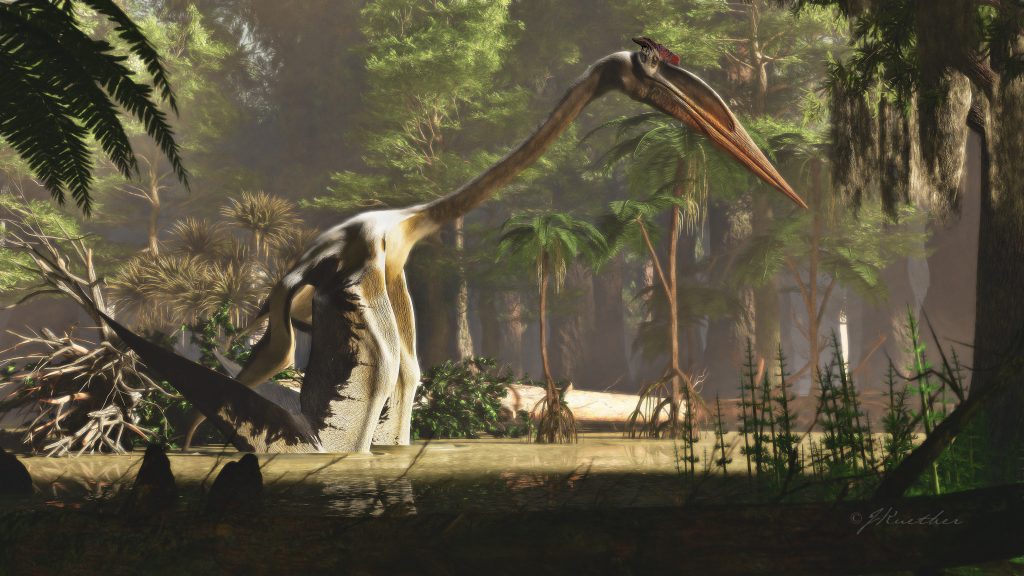
An artist’s interpretation of Quetzalcoatlus wading in the water. The latest research describes Quetzalcoatlus as having a lifestyle similar to today’s herons. Credit: James Kuether
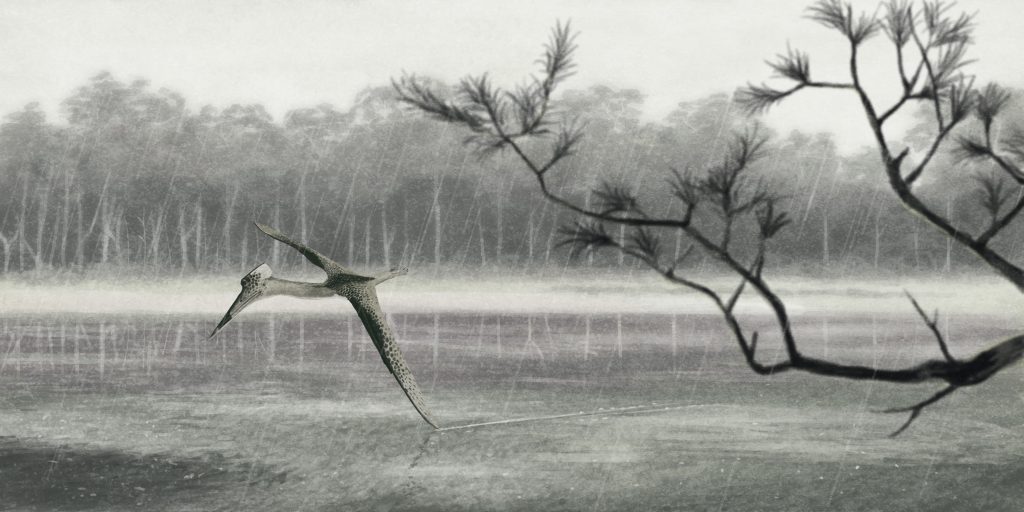
An artist’s interpretation of a new species of Quetzalcoatlus with an 18-20 foot wingspan soaring above the water. Credit: John Conway.
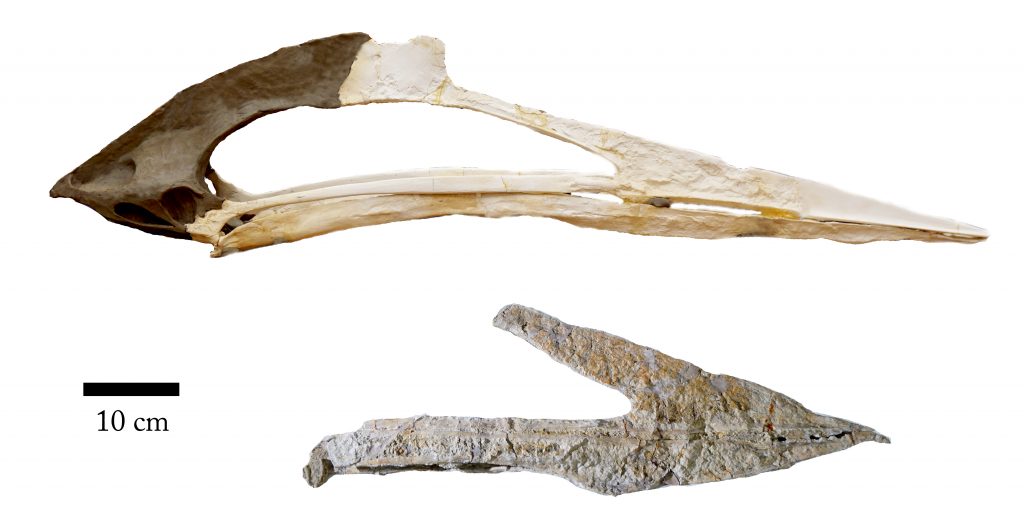
Top: Reconstruction of the skull of Quetzalcoatlus lawsoni. Material in white is mostly cast from real fossils, green is missing bone that has been sculpted.
Bottom: The partial skull of Wellnhopterus brevirostris. Preserved are anterior portions of the upper and lower jaws.
The two species can easily be differentiated by the long slender snout of Q. lawsoni and the short, blunted beak of W. brevirostris. Credit: Matthew Brown, The University of Texas at Austin / Jackson School of Geosciences
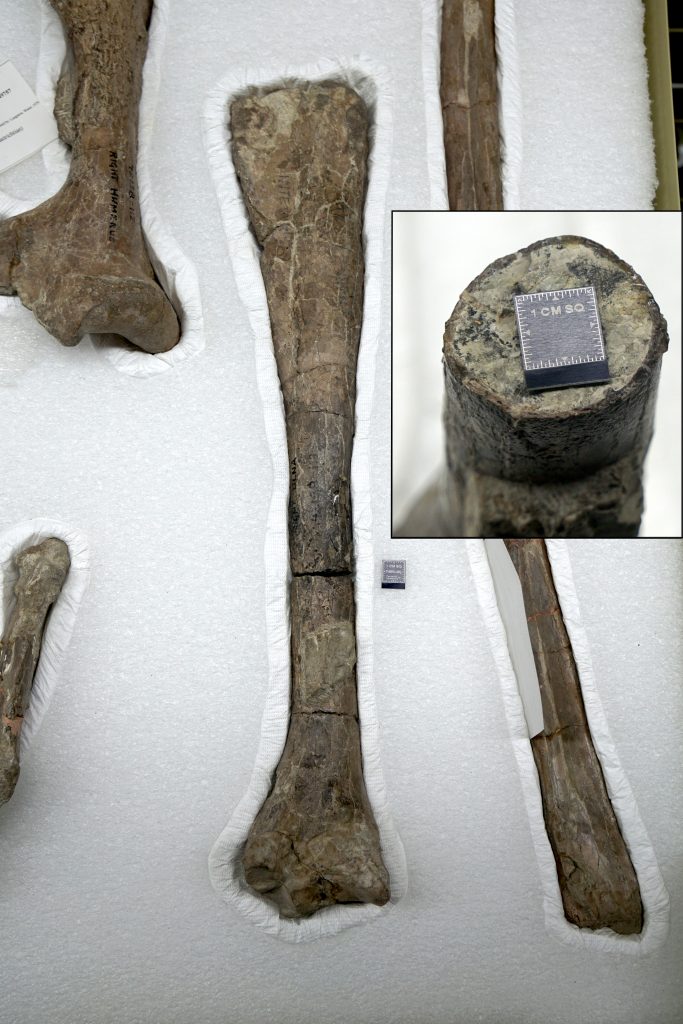
A cross section of the ulna of Quetzalcoatlus lawsoni, showing the hollow nature of the bones. The lighter grey color is rock, filling in the thin rim of darker brown fossil bone.
Credit: Matthew Brown, The University of Texas at Austin / Jackson School of Geosciences
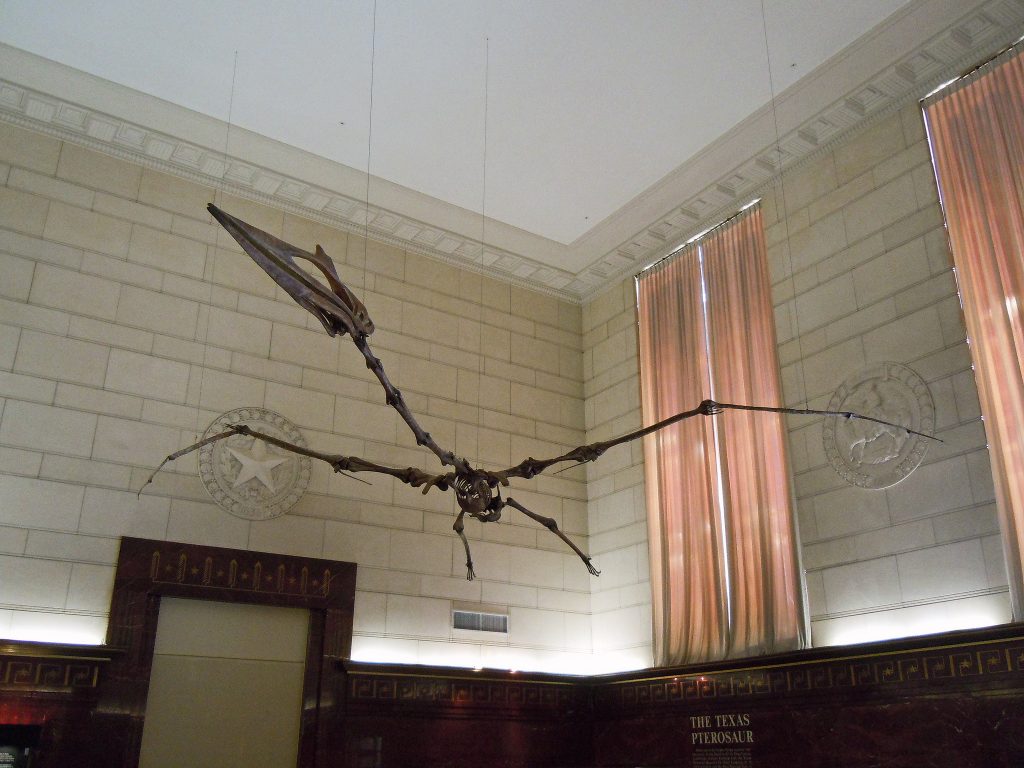
A reconstruction of a Quetzalcoatlus skeleton hanging from the ceiling of the Texas Memorial Museum on the University of Texas at Austin campus. Credit: The University of Texas at Austin / Jackson School of Geosciences
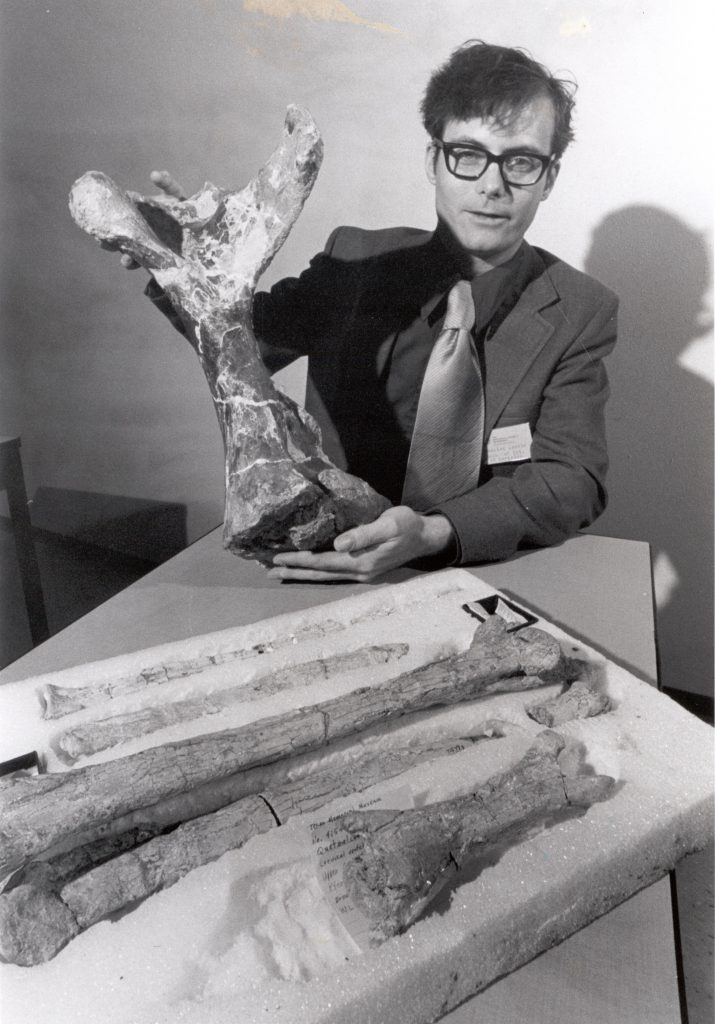
Douglas Lawson with Quetzalcoatlus wing bones that he discovered in Big Bend National Park. He is holding the humerus bone. Credit: The University of Texas at Austin / Jackson School of Geosciences
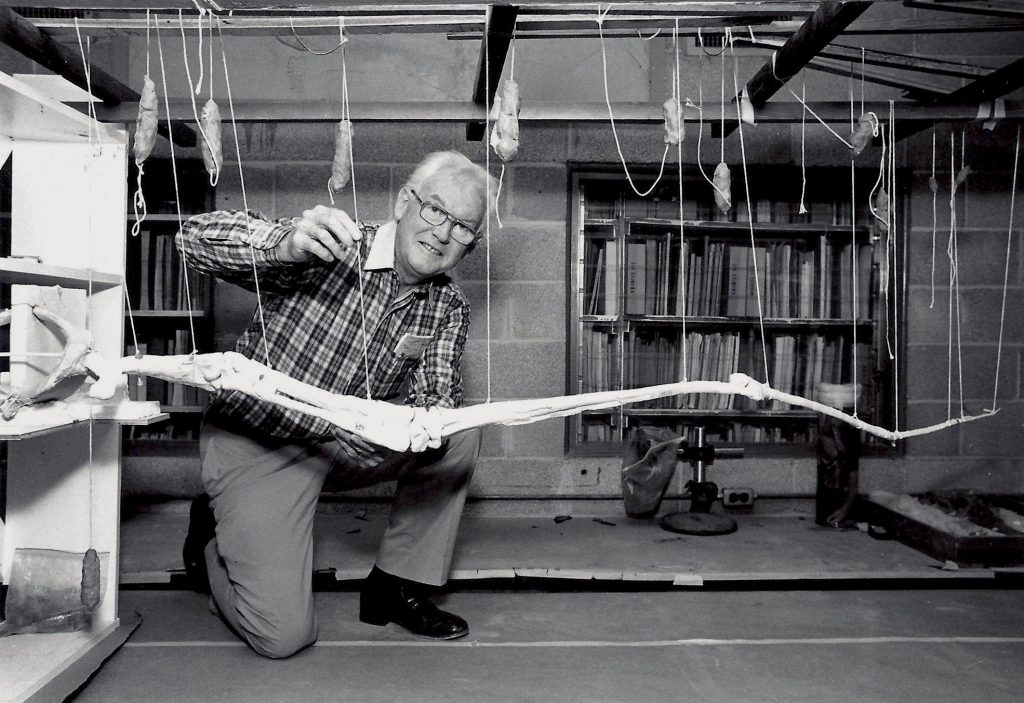
Wann Langston with a model wing from the smaller species of Quetzalcoatlus Credit: The University of Texas at Austin / Jackson School of Geosciences
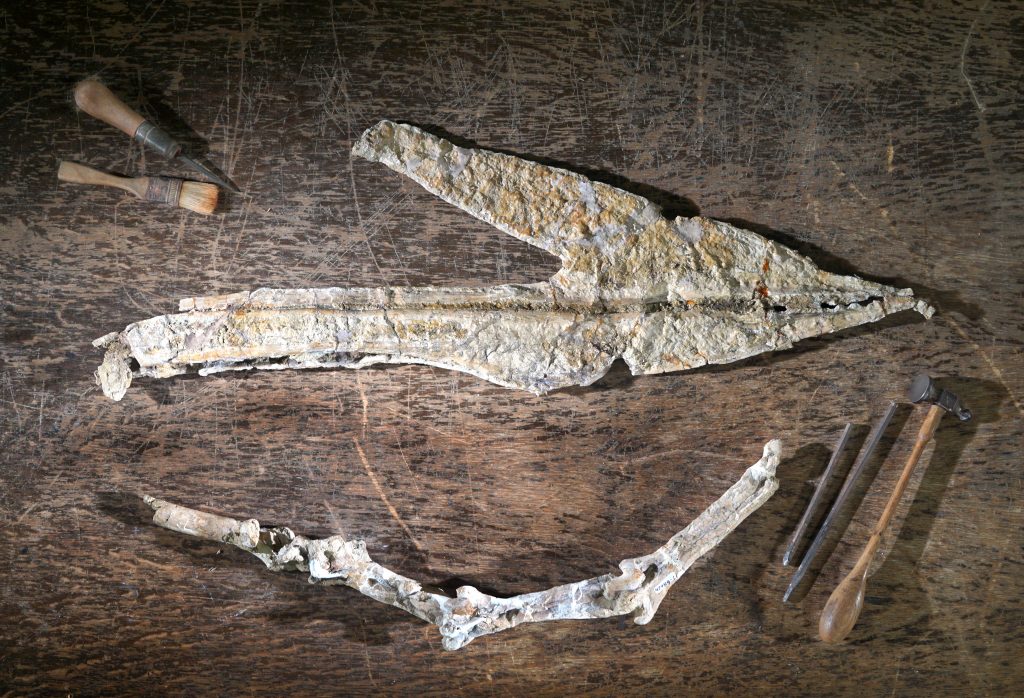
The beak and neck vertebrae of Wellnhopterus brevirostris, a newly described pterosaur from Big Bend National Park.
Credit: Matthew Brown, The University of Texas at Austin / Jackson School of Geosciences
Site Last Modified: February 28, 2025









